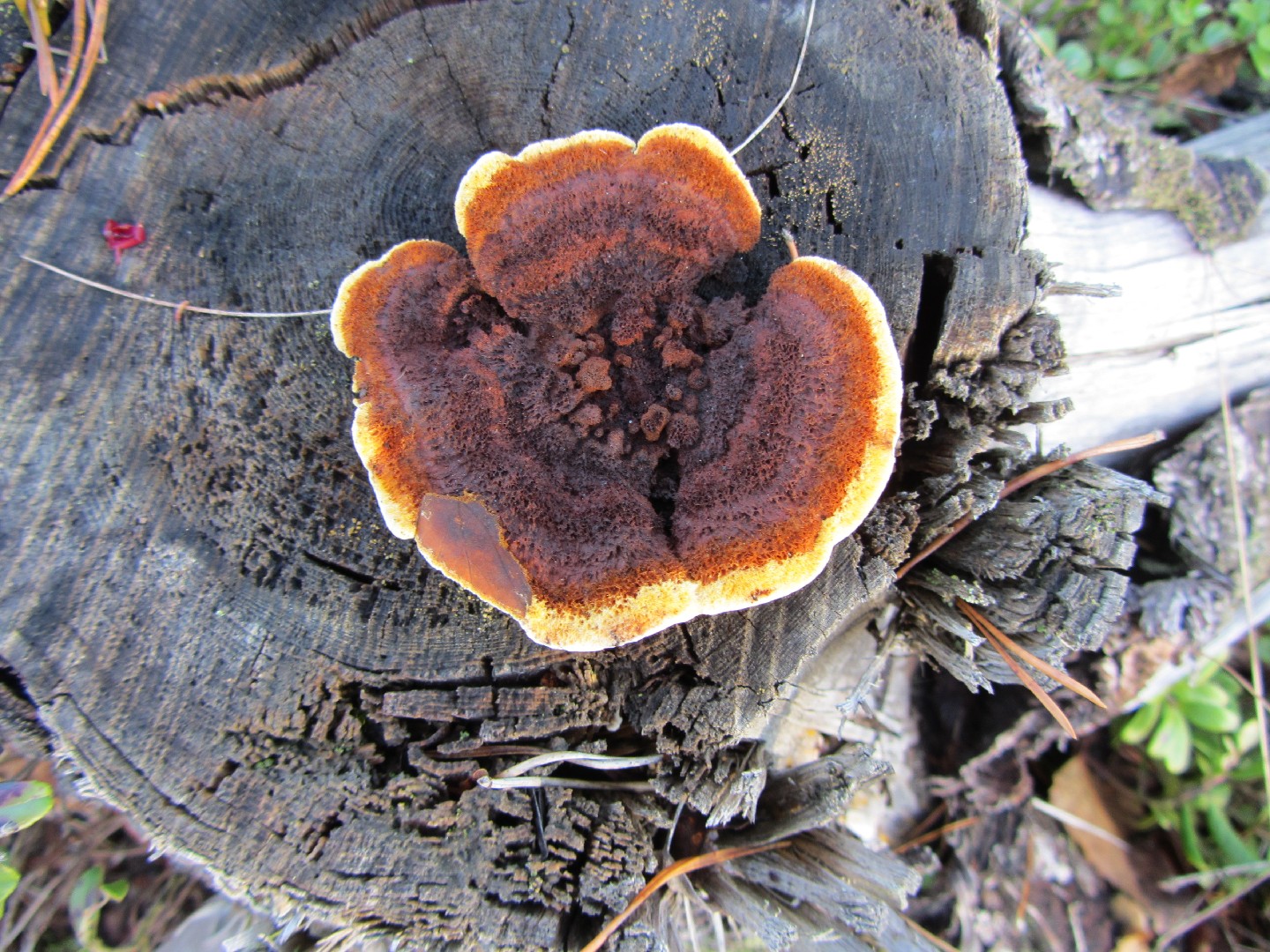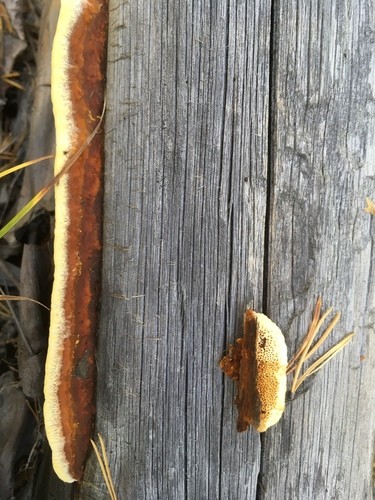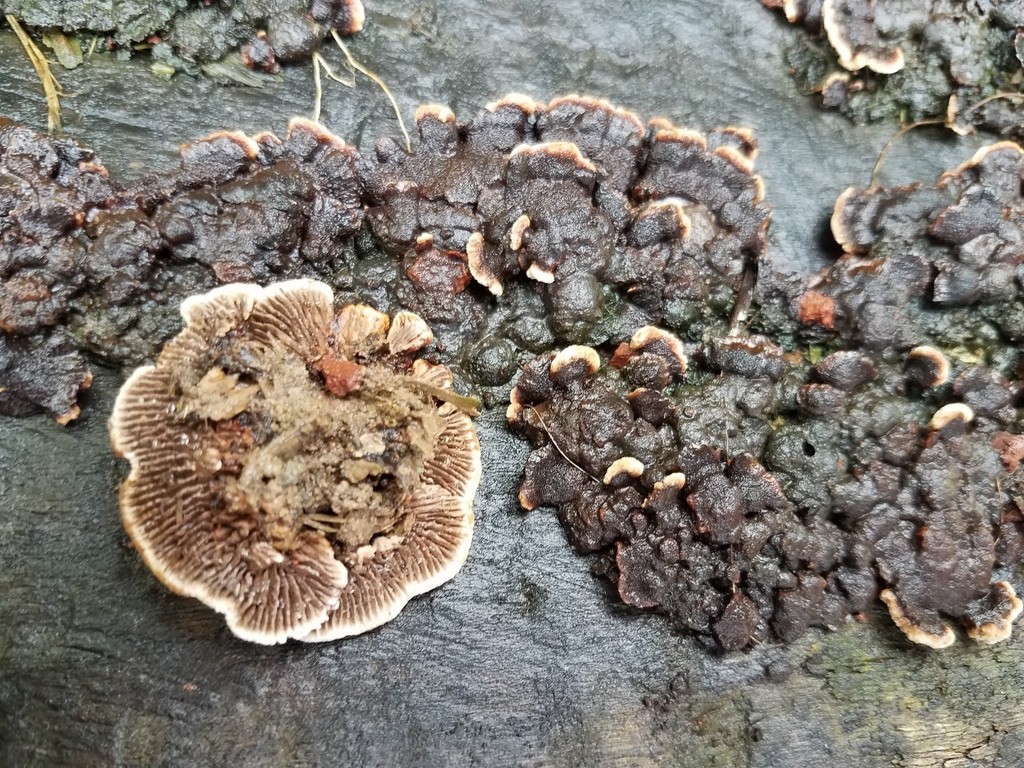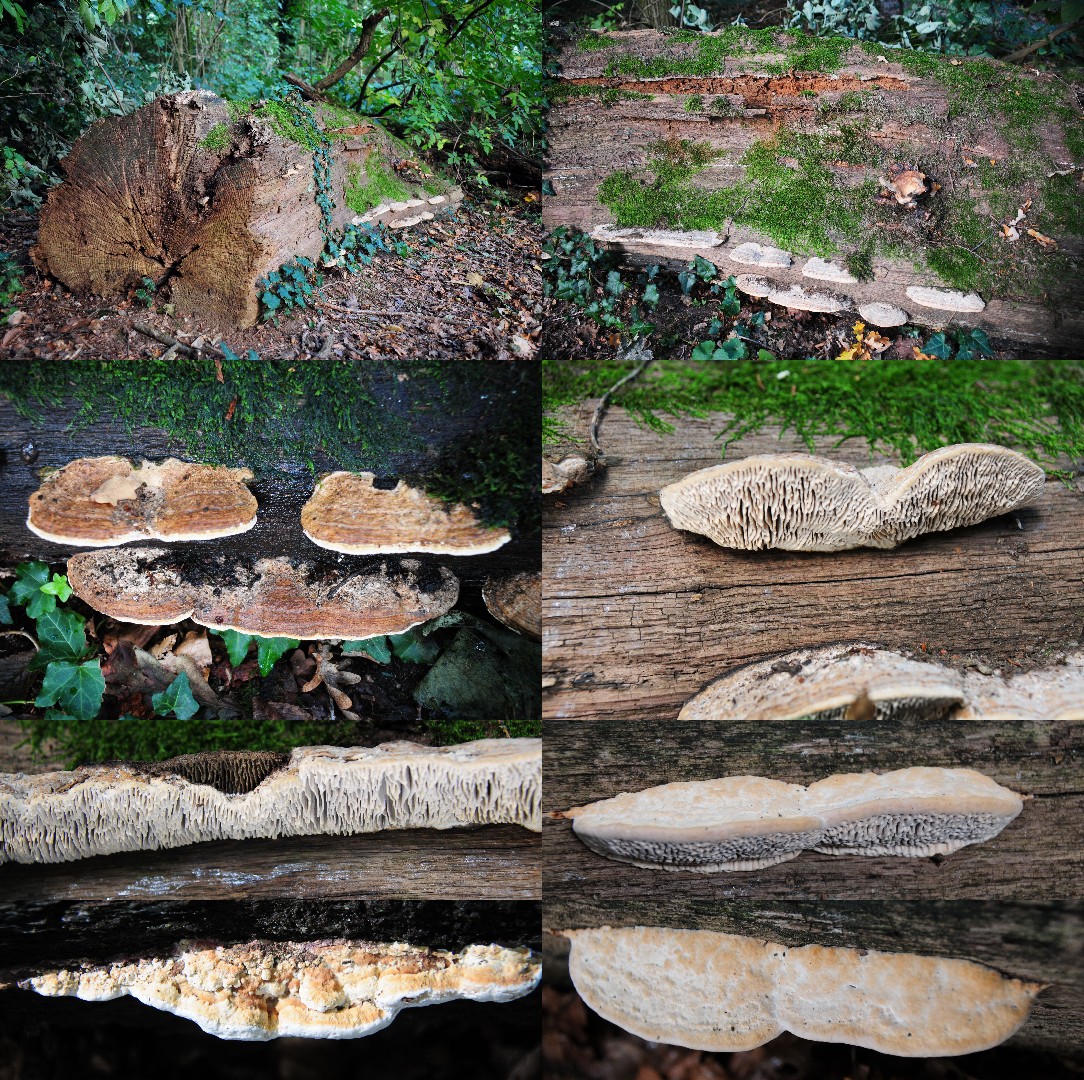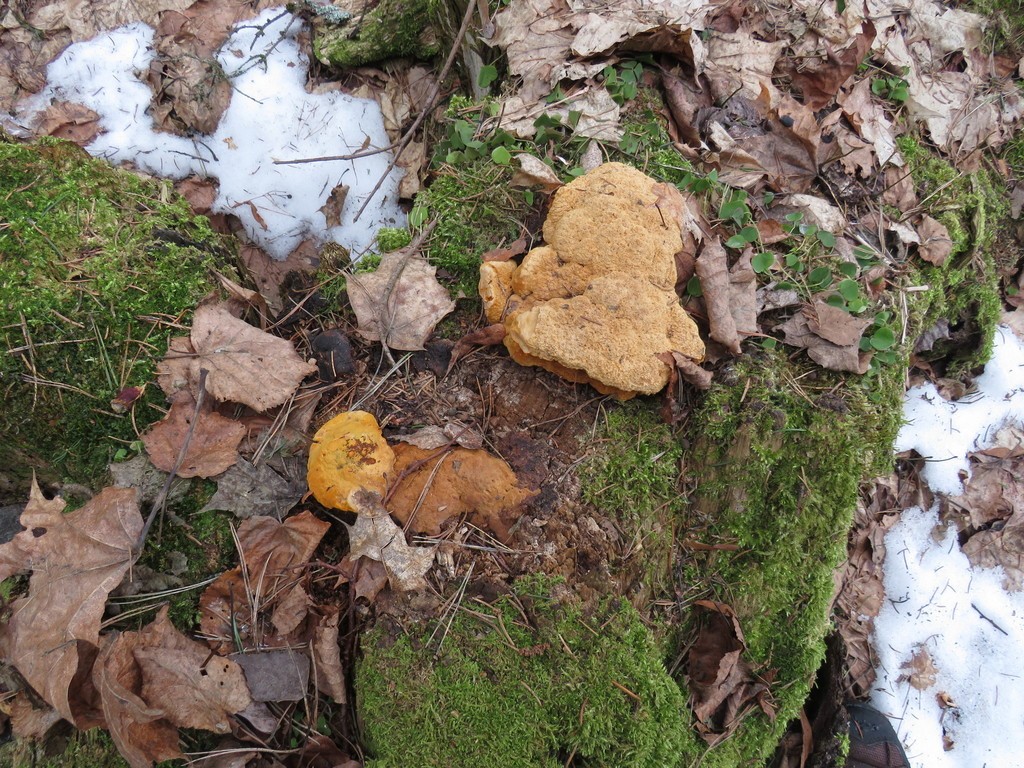Gloeophyllum
Scientific name: Gloeophyllum
Gloeophyllum
Scientific name: Gloeophyllum
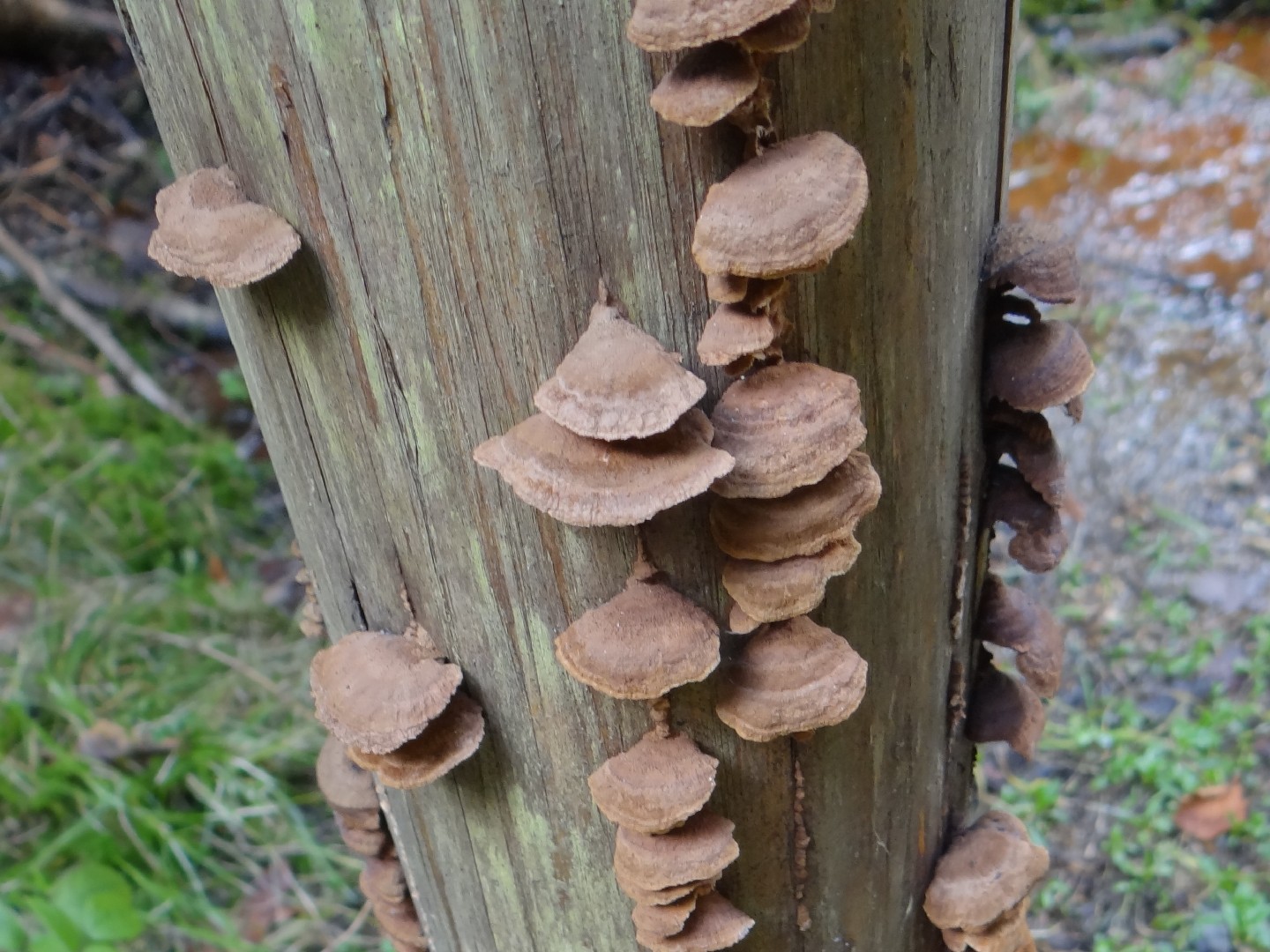 Photo By Jerzy Opioła , used under CC-BY-SA-4.0 /Cropped and compressed from original
Photo By Jerzy Opioła , used under CC-BY-SA-4.0 /Cropped and compressed from original Description
Gloeophyllum are a fascinating group of wood-decay fungi known for their ability to break down tough materials like lignin in wood. This group is typically found on dead coniferous trees and wooden structures, causing a type of decay known as brown rot. Interestingly, gloeophyllum are able to thrive in very dry conditions, which is uncommon for many types of fungi. Some species have distinctive fan-shaped fruiting bodies with striking, velvety caps.
Species of Gloeophyllum
Scientific Classification
Phylum
Club fungi Class
Mushroom-forming fungi Order
Gloeophyllales Family
Polypore Mushroom Genus
Gloeophyllum 